#Benefits Of Low-Code Platforms
Explore tagged Tumblr posts
Text
#Custom App Development#business application#Traditional app development#Low Code Development#software development#Benefits Of Low-Code Platforms#FlutterFlow#create a mobile application
0 notes
Text
Maximizing Efficiency: What Ops Leaders Should Look for in a Sales CRM
For sales operations leaders, choosing the right Customer Relationship Management (CRM) system is essential for driving productivity, enhancing customer relationships, and ensuring smooth sales processes. A CRM serves as the central hub for managing customer interactions, tracking leads, and streamlining workflows. However, with numerous CRM options available, ops leaders must focus on specific features to maximize efficiency.
Here are the key aspects ops leaders should prioritize when selecting a sales CRM.
1. Automation Capabilities
A primary factor in boosting sales efficiency is automation. Repetitive tasks such as lead assignments, follow-up emails, and data entry can be time-consuming for sales teams. A CRM with automation features can reduce these burdens and free up sales reps to focus on more strategic activities.
For example, workflow automation allows actions like assigning leads to specific team members or triggering email follow-ups based on predefined conditions. By automating such tasks, the CRM ensures consistency, reduces manual errors, and accelerates the sales cycle.
2. Integration with Other Tools
In today’s sales environment, teams use a variety of tools for marketing, customer support, and analytics. A CRM that integrates seamlessly with these systems enhances operational efficiency by centralizing data. A strong integration ecosystem allows for smooth data flow between different platforms, eliminating the need for manual data entry.
Ops leaders should look for CRMs that integrate with tools like email marketing platforms, customer support software, and analytics dashboards. This will ensure that sales teams have access to comprehensive customer data, helping them make informed decisions and personalize their approach.
3. Data Analytics and Reporting
A CRM is only as effective as the insights it can generate. Ops leaders need robust data analytics and reporting features to monitor sales performance, track KPIs, and identify areas for improvement. A CRM should offer customizable dashboards and real-time reporting tools that allow sales teams to track metrics like conversion rates, win rates, and sales cycle length.
Advanced analytics features such as predictive forecasting and trend analysis can also help ops leaders make data-driven decisions, allocate resources more efficiently, and refine sales strategies.
4. User Experience and Adoption
For a CRM to be effective, it must be easy to use and adopted across the sales team. A user-friendly interface with intuitive navigation reduces the learning curve and encourages widespread adoption. Sales reps should be able to access customer data quickly, update records easily, and perform tasks with minimal friction.
A mobile-friendly CRM is also important, as it enables sales reps to access critical information while on the go. Additionally, the ability to customize the system to match team workflows ensures that the CRM aligns with the unique needs of the business.
5. Scalability and Customization
As your business grows, so do the complexities of sales operations. A CRM that can scale with your organization is essential for long-term success. Look for a CRM that offers flexible pricing, the ability to add more users, and features that grow with your team’s needs.
Customization is another important aspect. The CRM should allow you to tailor fields, reports, and workflows to meet the unique requirements of your business, ensuring that it remains a valuable tool as your sales processes evolve.One key trend in the CRM space is the rise of low-code CRMs, which offer a balance between customization and ease of use.
Conclusion
Selecting the right CRM is crucial for ops leaders who aim to maximize sales efficiency. By prioritizing automation, integrations, data analytics, user experience, and scalability, ops leaders can ensure that their sales teams have the tools they need to succeed. A well-chosen CRM will streamline operations, improve decision-making, and ultimately drive revenue growth.
#Low-Code Platform#low code platform development#no code low code platform#low code app development platform#low code app development#best low code platform#benefits of low code no code platforms#low code no code platforms for mobile app development#low-code development#low code application developmet#low-code software
1 note
·
View note
Text
Exploring the Latest Trends in Software Development
Introduction The software is something like an industry whose development is ever-evolving with new technologies and changing market needs as the drivers. To this end, developers must keep abreast with current trends in their fields of operation to remain competitive and relevant. Read to continue .....
#analysis#science updates#tech news#technology#trends#adobe cloud#business tech#nvidia drive#science#tech trends#Software Solutions#Tags5G technology impact on software#Agile methodologies in software#AI in software development#AR and VR in development#blockchain technology in software#cloud-native development benefits#cybersecurity trends 2024#DevOps and CI/CD tools#emerging technologies in software development#future of software development#IoT and edge computing applications#latest software development trends#low-code development platforms#machine learning for developers#no-code development tools#popular programming languages#quantum computing in software#software development best practices#software development tools
0 notes
Text
What benefits of using AI with low-code/no-code platforms do you see?
[ ] I haven’t used AI with low-code/no-code platforms
[ ] AI helps with initial project generation for new products
[ ] AI allows for faster generation of data models, user interfaces, business rules, or other components
[ ] AI acts as a subject matter expert to help generate proper business functionality
[ ] AI reduces requirements for training and knowledge from developers
[ ] AI increases velocity when building integrations with other systems
[ ] AI improves productivity for developers and reduces the workforce needed
[ ] I haven’t observed any benefits from using AI with low-code/no-code platforms
[X] Other, please specify:
Good AI could tell stakeholders to avoid no-code platforms
19 notes
·
View notes
Text
I'm thinking about real machines you can fuck. I don't mean machines that stimulate your erogenous zones. That's been done, and it's neat, but I'm looking for a machine that has erogenous zones. A machine you can interact with erotically, not only sexually.
I have a number of not-quite-satisfactory examples: amp& speakers, train engines, retro consoles, old text-generating ANNs. Witness my descent:
With an amp & speakers, you can hear the interference change as you stroke the contacts — it's the same sensory feedback loop as a human's gasps & whimpers.
I might be into low frequency sounds. which reminds me: train engines. Modern ones — their deep, rumbling hum. I heard it, yes, resonating in my skull, and my hazy thoughts, my rattling perception, and I felt it in my chest as I moved, enraptured, down the platform, ever closer, to the source, passing through the rise and fall of standing waves.
Old game consoles seem to provide interesting glitches — I'm guessing this is because the whole system was so resource-constrained, there's no room for error-checking, and different types of data & code are stored in the same space, so pointing to the wrong location causes the program to start completely misinterpreting the data there (consider the humble missingno). Again, this produces interesting sensory (auditory & visual) experiences — more interesting but less responsive than those from fingering an aux port.
What I'm getting at with the consoles is that I want tech that fails interesting, that will keep going, stumbling over its own compounding errors, flashing pretty colors and letting out beautiful discordant sounds until it finally ceases to function at all.
Then there's text-generating neural nets — I prefer the older ones, where a bit of unexpected input causes them to go completely off the rails and say things like "TWITTER’S H-E-L-T-S WON’T FUNCTION DUE TO OVERLOAD OF BADTOMATE CALLS" or "For a photo or more information, contact the ZOPERIAN at      [email protected]                                            Â"
These neural nets are easy to break in interesting ways with your own clever manipulations, but they don't offer much in the way of sensory experience.
My ball of thoughts. Now to bring them together:
Touching audio contacts has the distinct benefit of connecting physical touch to changes in the machine and its feedback — even slight pressure changes will alter the speakers' buzzing. But all it does is buzz.
Train engines provide a rich sensory experience by resonating with body cavities, but there's not much most people can safely do to interact with the engine in turn.
Retro consoles and old (pre-GPT3 or so) text-generating neural nets generate interesting output when cleverly perturbed. Neural nets are easier to break, but consoles provide a fuller sensory experience.
So I suppose I'm looking for something that will noticeably glitch, but continue to function, with my fingers in its guts, thereby creating an interesting, responsive sensory experience that allows me to see, feel, and hear the effects of my touch.
#the late night delirium returns#I've been pondering this for a little while but I wanted to get (most of) the thoughts out so others can pickem up & run#because really it should be possible to create a machine that combines a lot of these desirable properties#maybe i should talk to my electrical engineer friend...#🜡
19 notes
·
View notes
Text
Scan the online brochures of companies who sell workplace monitoring tech and you’d think the average American worker was a renegade poised to take their employer down at the next opportunity. “Nearly half of US employees admit to time theft!” “Biometric readers for enhanced accuracy!” “Offer staff benefits in a controlled way with Vending Machine Access!”
A new wave of return-to-office mandates has arrived since the New Year, including at JP Morgan Chase, leading advertising agency WPP, and Amazon—not to mention President Trump’s late January directive to the heads of federal agencies to “terminate remote work arrangements and require employees to return to work in-person … on a full-time basis.” Five years on from the pandemic, when the world showed how effectively many roles could be performed remotely or flexibly, what’s caused the sudden change of heart?
“There’s two things happening,” says global industry analyst Josh Bersin, who is based in California. “The economy is actually slowing down, so companies are hiring less. So there is a trend toward productivity in general, and then AI has forced virtually every company to reallocate resources toward AI projects.
“The expectation amongst CEOs is that’s going to eliminate a lot of jobs. A lot of these back-to-work mandates are due to frustration that both of those initiatives are hard to measure or hard to do when we don’t know what people are doing at home.”
The question is, what exactly are we returning to?
Take any consumer tech buzzword of the 21st century and chances are it’s already being widely used across the US to monitor time, attendance and, in some cases, the productivity of workers, in sectors such as manufacturing, retail, and fast food chains: RFID badges, GPS time clock apps, NFC apps, QR code clocking-in, Apple Watch badges, and palm, face, eye, voice, and finger scanners. Biometric scanners have long been sold to companies as a way to avoid hourly workers “buddy punching” for each other at the start and end of shifts—so-called “time theft.” A return-to-office mandate and its enforcement opens the door for similar scenarios for salaried staff.
Track and Trace
The latest, deluxe end point of these time and attendance tchotchkes and apps is something like Austin-headquartered HID’s OmniKey platform. Designed for factories, hospitals, universities and offices, this is essentially an all-encompassing RFID log-in and security system for employees, via smart cards, smartphone wallets, and wearables. These will not only monitor turnstile entrances, exits, and floor access by way of elevators but also parking, the use of meeting rooms, the cafeteria, printers, lockers, and yes, vending machine access.
These technologies, and more sophisticated worker location- and behavior-tracking systems, are expanding from blue-collar jobs to pink-collar industries and even white-collar office settings. Depending on the survey, approximately 70 to 80 percent of large US employers now use some form of employee monitoring, and the likes of PwC have explicitly told workers that managers will be tracking their location to enforce a three-day office week policy.
“Several of these earlier technologies, like RFID sensors and low-tech barcode scanners, have been used in manufacturing, in warehouses, or in other settings for some time,” says Wolfie Christl, a researcher of workplace surveillance for Cracked Labs, a nonprofit based in Vienna, Austria. “We’re moving toward the use of all kinds of sensor data, and this kind of technology is certainly now moving into the offices. However, I think for many of these, it’s questionable whether they really make sense there.”
What’s new, at least to the recent pandemic age of hybrid working, is the extent to which workers can now be tracked inside office buildings. Cracked Labs published a frankly terrifying 25-page case study report in November 2024 showing how systems of wireless networking, motion sensors, and Bluetooth beacons, whether intentionally or as a byproduct of their capabilities, can provide “behavioral monitoring and profiling” in office settings.
The project breaks the tech down into two categories: The first is technology that tracks desk presence and room occupancy, and the second monitors the indoor location, movement, and behavior of the people working inside the building.
To start with desk and room occupancy, Spacewell offers a mix of motion sensors installed under desks, in ceilings, and at doorways in “office spaces” and heat sensors and low-resolution visual sensors to show which desks and rooms are being used. Both real-time and trend data are available to managers via its “live data floorplan,” and the sensors also capture temperature, environmental, light intensity, and humidity data.
The Swiss-headquartered Locatee, meanwhile, uses existing badge and device data via Wi-Fi and LAN to continuously monitor clocking in and clocking out, time spent by workers at desks and on specific floors, and the number of hours and days spent by employees at the office per week. While the software displays aggregate rather than individual personal employee data to company executives, the Cracked Labs report points out that Locatee offers a segmented team analytics report which “reveals data on small groups.”
As more companies return to the office, the interest in this idea of “optimized” working spaces is growing fast. According to S&S Insider’s early 2025 analysis, the connected office was worth $43 billion in 2023 and will grow to $122.5 billion by 2032. Alongside this, IndustryARC predicts there will be a $4.5 billion employee-monitoring-technology market, mostly in North America, by 2026—the only issue being that the crossover between the two is blurry at best.
At the end of January, Logitech showed off its millimeter-wave radar Spot sensors, which are designed to allow employers to monitor whether rooms are being used and which rooms in the building are used the most. A Logitech rep told The Verge that the peel-and-stick devices, which also monitor VOCs, temperature, and humidity, could theoretically estimate the general placement of people in a meeting room.
As Christl explains, because of the functionality that these types of sensor-based systems offer, there is the very real possibility of a creep from legitimate applications, such as managing energy use, worker health and safety, and ensuring sufficient office resources into more intrusive purposes.
“For me, the main issue is that if companies use highly sensitive data like tracking the location of employees’ devices and smartphones indoors or even use motion detectors indoors,” he says, “then there must be totally reliable safeguards that this data is not being used for any other purposes.”
Big Brother Is Watching
This warning becomes even more pressing where workers’ indoor location, movement, and behavior are concerned. Cisco’s Spaces cloud platform has digitized 11 billion square feet of enterprise locations, producing 24.7 trillion location data points. The Spaces system is used by more than 8,800 businesses worldwide and is deployed by the likes of InterContinental Hotels Group, WeWork, the NHS Foundation, and San Jose State University, according to Cisco’s website.
While it has applications for retailers, restaurants, hotels, and event venues, many of its features are designed to function in office environments, including meeting room management and occupancy monitoring. Spaces is designed as a comprehensive, all-seeing eye into how employees (and customers and visitors, depending on the setting) and their connected devices, equipment, or “assets” move through physical spaces.
Cisco has achieved this by using its existing wireless infrastructure and combining data from Wi-Fi access points with Bluetooth tracking. Spaces offers employers both real-time views and historical data dashboards. The use cases? Everything from meeting-room scheduling and optimizing cleaning schedules to more invasive dashboards on employees’ entry and exit times, the duration of staff workdays, visit durations by floor, and other “behavior metrics.” This includes those related to performance, a feature pitched at manufacturing sites.
Some of these analytics use aggregate data, but Cracked Labs details how Spaces goes beyond this into personal data, with device usernames and identifiers that make it possible to single out individuals. While the ability to protect privacy by using MAC randomization is there, Cisco emphasizes that this makes indoor movement analytics “unreliable” and other applications impossible—leaving companies to make that decision themselves.
Management even has the ability to send employees nudge-style alerts based on their location in the building. An IBM application, based on Cisco’s underlying technology, offers to spot anomalies in occupancy patterns and send notifications to workers or their managers based on what it finds. Cisco’s Spaces can also incorporate video footage from Cisco security cameras and WebEx video conferencing hardware into the overall system of indoor movement monitoring; another example of function creep from security to employee tracking in the workplace.
“Cisco is simply everywhere. As soon as employers start to repurpose data that is being collected from networking or IT infrastructure, this quickly becomes very dangerous, from my perspective.” says Christl. “With this kind of indoor location tracking technology based on its Wi-Fi networks, I think that a vendor as major as Cisco has a responsibility to ensure it doesn’t suggest or market solutions that are really irresponsible to employers.
“I would consider any productivity and performance tracking very problematic when based on this kind of intrusive behavioral data.” WIRED approached Cisco for comment but didn’t receive a response before publication.
Cisco isn't alone in this, though. Similar to Spaces, Juniper’s Mist offers an indoor tracking system that uses both Wi-Fi networks and Bluetooth beacons to locate people, connected devices, and Bluetooth tagged badges on a real-time map, with the option of up to 13 months of historical data on worker behavior.
Juniper’s offering, for workplaces including offices, hospitals, manufacturing sites, and retailers, is so precise that it is able to provide records of employees’ device names, together with the exact enter and exit times and duration of visits between “zones” in offices—including one labeled “break area/kitchen” in a demo. Yikes.
For each of these systems, a range of different applications is functionally possible, and some which raise labor-law concerns. “A worst-case scenario would be that management wants to fire someone and then starts looking into historical records trying to find some misconduct,” says Christl. "If it’s necessary to investigate employees, then there should be a procedure where, for example, a worker representative is looking into the fine-grained behavioral data together with management. This would be another safeguard to prevent misuse.”
Above and Beyond?
If warehouse-style tracking has the potential for management overkill in office settings, it makes even less sense in service and health care jobs, and American unions are now pushing for more access to data and quotas used in disciplinary action. Elizabeth Anderson, professor of public philosophy at the University of Michigan and the author of Private Government: How Employers Rule Our Lives, describes how black-box algorithm-driven management and monitoring affects not just the day-to-day of nursing staff but also their sense of work and value.
“Surveillance and this idea of time theft, it’s all connected to this idea of wasting time,” she explains. “Essentially all relational work is considered inefficient. In a memory care unit, for example, the system will say how long to give a patient breakfast, how many minutes to get them dressed, and so forth.
“Maybe an Alzheimer’s patient is frightened, so a nurse has to spend some time calming them down, or perhaps they have lost some ability overnight. That’s not one of the discrete physical tasks that can be measured. Most of the job is helping that person cope with declining faculties; it takes time for that, for people to read your emotions and respond appropriately. What you get is massive moral injury with this notion of efficiency.”
This kind of monitoring extends to service workers, including servers in restaurants and cleaning staff, according to a 2023 Cracked Labs’ report into retail and hospitality. Software developed by Oracle is used to, among other applications, rate and rank servers based on speed, sales, timekeeping around breaks, and how many tips they receive. Similar Oracle software that monitors mobile workers such as housekeepers and cleaners in hotels uses a timer for app-based micromanagement—for instance, “you have two minutes for this room, and there are four tasks.”
As Christl explains, this simply doesn’t work in practice. “People have to struggle to combine what they really do with this kind of rigid, digital system. And it’s not easy to standardize work like talking to patients and other kinds of affective work, like how friendly you are as a waiter. This is a major problem. These systems cannot represent the work that is being done accurately.”
But can knowledge work done in offices ever be effectively measured and assessed either? In an episode of his podcast in January, host Ezra Klein battled his own feelings about having many of his best creative ideas at a café down the street from where he lives rather than in The New York Times’ Manhattan offices. Anderson agrees that creativity often has to find its own path.
“Say there’s a webcam tracking your eyes to make sure you’re looking at the screen,” she says. “We know that daydreaming a little can actually help people come up with creative ideas. Just letting your mind wander is incredibly useful for productivity overall, but that requires some time looking around or out the window. The software connected to your camera is saying you’re off-duty—that you’re wasting time. Nobody’s mind can keep concentrated for the whole work day, but you don’t even want that from a productivity point of view.”
Even for roles where it might make more methodological sense to track discrete physical tasks, there can be negative consequences of nonstop monitoring. Anderson points to a scene in Erik Gandini’s 2023 documentary After Work that shows an Amazon delivery driver who is monitored, via camera, for their driving, delivery quotas, and even getting dinged for using Spotify in the van.
“It’s very tightly regulated and super, super intrusive, and it’s all based on distrust as the starting point,” she says. “What these tech bros don’t understand is that if you install surveillance technology, which is all about distrusting the workers, there is a deep feature of human psychology that is reciprocity. If you don’t trust me, I’m not going to trust you. You think an employee who doesn’t trust the boss is going to be working with the same enthusiasm? I don’t think so.”
Trust Issues
The fixes, then, might be in the leadership itself, not more data dashboards. “Our research shows that excessive monitoring in the workplace can damage trust, have a negative impact on morale, and cause stress and anxiety,” says Hayfa Mohdzaini, senior policy and practice adviser for technology at the CIPD, the UK’s professional body for HR, learning, and development. “Employers might achieve better productivity by investing in line manager training and ensuring employees feel supported with reasonable expectations around office attendance and manageable workloads.”
A 2023 Pew Research study found that 56 percent of US workers were opposed to the use of AI to keep track of when employees were at their desks, and 61 percent were against tracking employees’ movements while they work.
This dropped to just 51 percent of workers who were opposed to recording work done on company computers, through the use of a kind of corporate “spyware” often accepted by staff in the private sector. As Josh Bersin puts it, “Yes, the company can read your emails” with platforms such as Teramind, even including “sentiment analysis” of employee messages.
Snooping on files, emails, and digital chats takes on new significance when it comes to government workers, though. New reporting from WIRED, based on conversations with employees at 13 federal agencies, reveals the extent to Elon Musk’s DOGE team’s surveillance: software including Google’s Gemini AI chatbot, a Dynatrace extension, and security tool Splunk have been added to government computers in recent weeks, and some people have felt they can’t speak freely on recorded and transcribed Microsoft Teams calls. Various agencies already use Everfox software and Dtex’s Intercept system, which generates individual risk scores for workers based on websites and files accessed.
Alongside mass layoffs and furloughs over the past four weeks, the so-called Department of Government Efficiency has also, according to CBS News and NPR reports, gone into multiple agencies in February with the theater and bombast of full X-ray security screenings replacing entry badges at Washington, DC, headquarters. That’s alongside managers telling staff that their logging in and out of devices, swiping in and out of workspaces, and all of their digital work chats will be “closely monitored” going forward.
“Maybe they’re trying to make a big deal out of it to scare people right now,” says Bersin. “The federal government is using back-to-work as an excuse to lay off a bunch of people.”
DOGE staff have reportedly even added keylogger software to government computers to track everything employees type, with staff concerned that anyone using keywords related to progressive thinking or "disloyalty” to Trump could be targeted—not to mention the security risks it introduces for those working on sensitive projects. As one worker told NPR, it feels “Soviet-style” and “Orwellian” with “nonstop monitoring.” Anderson describes the overall DOGE playbook as a series of “deeply intrusive invasions of privacy.”
Alternate Realities
But what protections are out there for employees? Certain states, such as New York and Illinois, do offer strong privacy protections against, for example, unnecessary biometric tracking in the private sector, and California’s Consumer Privacy Act covers workers as well as consumers. Overall, though, the lack of federal-level labor law in this area makes the US something of an alternate reality to what is legal in the UK and Europe.
The Electronic Communications Privacy Act in the US allows employee monitoring for legitimate business reasons and with the worker’s consent. In Europe, Algorithm Watch has made country analyses for workplace surveillance in the UK, Italy, Sweden, and Poland. To take one high-profile example of the stark difference: In early 2024, Serco was ordered by the UK's privacy watchdog, the Information Commissioner’s Office (ICO), to stop using face recognition and fingerprint scanning systems, designed by Shopworks, to track the time and attendance of 2,000 staff across 38 leisure centers around the country. This new guidance led to more companies reviewing or cutting the technology altogether, including Virgin Active, which pulled similar biometric employee monitoring systems from 30-plus sites.
Despite a lack of comprehensive privacy rights in the US, though, worker protest, union organizing, and media coverage can provide a firewall against some office surveillance schemes. Unions such as the Service Employees International Union are pushing for laws to protect workers from black-box algorithms dictating the pace of output.
In December, Boeing scrapped a pilot of employee monitoring at offices in Missouri and Washington, which was based on a system of infrared motion sensors and VuSensor cameras installed in ceilings, made by Ohio-based Avuity. The U-turn came after a Boeing employee leaked an internal PowerPoint presentation on the occupancy- and headcount-tracking technology to The Seattle Times. In a matter of weeks, Boeing confirmed that managers would remove all the sensors that had been installed to date.
Under-desk sensors, in particular, have received high-profile backlash, perhaps because they are such an obvious piece of surveillance hardware rather than simply software designed to record work done on company machines. In the fall of 2022, students at Northeastern University hacked and removed under-desk sensors produced by EnOcean, offering “presence detection” and “people counting,” that had been installed in the school’s Interdisciplinary Science & Engineering Complex. The university provost eventually informed students that the department had planned to use the sensors with the Spaceti platform to optimize desk usage.
OccupEye (now owned by FM: Systems), another type of under-desk heat and motion sensor, received a similar reaction from staff at Barclays Bank and The Telegraph newspaper in London, with employees protesting and, in some cases, physically removing the devices that tracked the time they spent away from their desks.
Despite the fallout, Barclays later faced a $1.1 billion fine from the ICO when it was found to have deployed Sapience’s employee monitoring software in its offices, with the ability to single out and track individual employees. Perhaps unsurprisingly in the current climate, that same software company now offers “lightweight device-level technology” to monitor return-to-office policy compliance, with a dashboard breaking employee location down by office versus remote for specific departments and teams.
According to Elizabeth Anderson’s latest book Hijacked, while workplace surveillance culture and the obsession with measuring employee efficiency might feel relatively new, it can actually be traced back to the invention of the “work ethic” by the Puritans in the 16th and 17th centuries.
“They thought you should be working super hard; you shouldn’t be idling around when you should be in work,” she says. “You can see some elements there that can be developed into a pretty hostile stance toward workers. The Puritans were obsessed with not wasting time. It was about gaining assurance of salvation through your behavior. With the Industrial Revolution, the ‘no wasting time’ became a profit-maximizing strategy. Now you’re at work 24/7 because they can get you on email.”
Some key components of the original work ethic, though, have been skewed or lost over time. The Puritans also had strict constraints on what duties employers had toward their workers: paying a living wage and providing safe and healthy working conditions.
“You couldn’t just rule them tyrannically, or so they said. You had to treat them as your fellow Christians, with dignity and respect. In many ways the original work ethic was an ethic which uplifted workers.”
6 notes
·
View notes
Text
Best Payment Gateway In India– Quick Pay

In today's digital era, businesses of all sizes need a reliable, secure, and efficient payment gateway to process online transactions. Whether you're running an e-commerce store, a subscription-based service, or a brick-and-mortar shop expanding to digital payments, choosing the right payment gateway can significantly impact your success. Among the many options available, Quick Pay has emerged as one of the best payment gateways in the industry.
This article explores the features, benefits, security measures, and why Quick Pay is the preferred choice for businesses worldwide.
What is Quick Pay?
Quick Pay is a cutting-edge payment gateway solution that facilitates seamless online transactions between merchants and customers. It offers a secure and user-friendly interface, allowing businesses to accept payments via credit cards, debit cards, mobile wallets, and bank transfers. Quick Pay supports multiple currencies and integrates with various e-commerce platforms, making it a versatile choice for businesses operating locally and globally.
Key Features of Quick Pay
1. Multi-Channel Payment Support
One of the standout features of Quick Pay is its ability to support multiple payment channels, including:
Credit and debit card processing (Visa, Mastercard, American Express, etc.)
Mobile wallets (Apple Pay, Google Pay, PayPal, etc.)
Bank transfers and direct debit
QR code payments
Buy Now, Pay Later (BNPL) services
This flexibility ensures that businesses can cater to customers' diverse payment preferences, thereby enhancing the checkout experience and improving sales conversion rates.
2. Seamless Integration
Quick Pay offers seamless integration with major e-commerce platforms like Shopify, WooCommerce, Magento, and BigCommerce. Additionally, it provides APIs and plugins that allow businesses to customize payment processing according to their specific needs. Developers can easily integrate Quick Pay into their websites and mobile applications without extensive coding knowledge.
3. High-Level Security & Fraud Prevention
Security is a top priority for any payment gateway, and Quick Pay excels in this area with:
PCI DSS compliance (Payment Card Industry Data Security Standard)
Advanced encryption technology to protect sensitive data
AI-driven fraud detection and prevention mechanisms
3D Secure authentication for an extra layer of security
By implementing these security measures, Quick Pay minimizes fraudulent transactions and enhances customer trust.
4. Fast and Reliable Transactions
Speed and reliability are crucial in online payments. Quick Pay ensures that transactions are processed swiftly with minimal downtime. It supports instant payment processing, reducing wait times for merchants and customers alike. Businesses can also benefit from automated settlement features that streamline fund transfers to their bank accounts.
5. Competitive Pricing & Transparent Fees
Unlike many payment gateways that have hidden charges, Quick Pay provides transparent pricing models. It offers:
No setup fees
Low transaction fees with volume-based discounts
No hidden maintenance or withdrawal charges
Custom pricing plans for high-volume merchants
This cost-effective approach makes Quick Pay a preferred choice for startups and large enterprises alike.
6. Recurring Payments & Subscription Billing
For businesses offering subscription-based services, Quick Pay provides a robust recurring payment system. It automates billing cycles, reducing manual efforts while ensuring timely payments. Customers can set up autopay, making it convenient for them and improving customer retention rates for businesses.
7. Multi-Currency & Global Payment Support
In an increasingly globalized economy, accepting international payments is vital. Quick Pay supports transactions in multiple currencies and offers dynamic currency conversion. This allows businesses to cater to international customers without dealing with complex exchange rate issues.
Benefits of Using Quick Pay
1. Enhanced Customer Experience
Quick Pay ensures a smooth checkout experience by providing multiple payment options and a user-friendly interface. Faster payment processing reduces cart abandonment and boosts customer satisfaction.
2. Improved Business Efficiency
With automated invoicing, seamless integration, and real-time transaction tracking, businesses can streamline their payment operations, saving time and resources.
3. Higher Security & Reduced Fraud Risk
With its state-of-the-art security measures, Quick Pay minimizes risks associated with fraud and data breaches. This enhances business credibility and customer trust.
4. Increased Sales & Revenue
Supporting multiple payment options and international transactions helps businesses tap into a broader customer base, leading to higher sales and revenue growth.
How to Set Up Quick Pay for Your Business?
Setting up Quick Pay is a straightforward process:
Sign Up – Visit the Quick Pay website and create an account.
Verify Business Details – Submit the required business documents for verification.
Integrate Quick Pay – Use APIs, plugins, or custom scripts to integrate Quick Pay into your website or app.
Configure Payment Options – Select the preferred payment methods you want to offer customers.
Go Live – Once approved, start accepting payments seamlessly.
Why Quick Pay Stands Out Among Competitors
While several payment gateways exist, Quick Pay differentiates itself with:
Superior security measures compared to standard gateways.
Faster payouts than many competitors, ensuring businesses receive funds quicker.
Customer-friendly interface making it easier for both merchants and users.
Scalability, accommodating businesses from small startups to large enterprises.
Conclusion
Quick Pay is undoubtedly one of the best payment gateway in India available today. Its blend of security, efficiency, affordability, and ease of use makes it an ideal choice for businesses across various industries. Whether you run an e-commerce store, a SaaS business, or a global enterprise, Quick Pay ensures smooth, secure, and hassle-free payment processing.
By choosing Quick Pay, businesses can enhance customer experience, reduce fraud risks, and boost revenue. With seamless integration, multi-currency support, and advanced features, Quick Pay is the go-to payment gateway for modern businesses looking for a reliable and future-proof payment solution.
Are you ready to streamline your payments and take your business to the next level? Sign up for Quick Pay today!
2 notes
·
View notes
Text
The Future of ERP Integrations: How Low-Code and No-Code Platforms Are Changing the Game
Enterprise Resource Planning (ERP) systems’ primary goal has been to enhance business operations through streamlining critical processes such as finance or supply chain management. However, to be honest, the integration of the ERPs with other tools has not always been an easy task. It was really a nightmare for companies to integrate ERPs with the other tools. Time-consuming development cycles, huge IT costs, and some complex coding requirements totally turned ERP integrations into a mess for businesses.
But, here are low-code and no-code platforms like Odoo ERP that are quite the game-changers in ERP integrations. These contemporary remedies have made it much easier, faster, and cheaper to connect ERPs with other business applications. Let me explain to you how they are altering the landscape.

Breaking Down the Buzz: What Are Low-Code and No-Code Platforms?
Low-code platforms enable users to develop applications by designing visually with less code. They include visual design immediate productivity capabilities that promise to fast-track work for a broad spectrum of users in the organization.
No-code platforms take the automation level a little further allowing even average users like IT, ERP, engineers, business analysts, and business owners to create their systems the way they want without having to write a single line of code, and thus they can focus on tasks that matter.
By doing this, businesses just simply change their budget from standard, long, and costly ERP integrations to the cloud.
How Low-Code & No-Code Are Transforming ERP Integrations
Speed Like Never Before - Traditional ERP integrations used to be a time-consuming process and often took weeks, sometimes even months. The use of low-code/no-code tools has become revolutionary and businesses can now develop integrations in just a few days or hours. At the same time, pre-built Connectors and Templates, and automation tools certainly make the life of developers easier.
Reduced IT Dependency - In the past, ERP integrations necessitated the participation of IT teams or even external developers. Over time, the implementation of the low code/no code approach has increasingly led to newcomers getting involved. For instance, the business user can take up the role of the IT team, and as a result, the bottleneck is removed, and the tech teams do more strategic tasks.
Cost Savings Galore - The cost of hiring developers for custom ERP integrations can be hefty. On the other hand, Low-code/no-code solutions indeed offer the benefit of not needing much real developer input. As a result, such systems can be set up and maintained by non-technical employees alone.
Flexibility & Scalability - Companies are getting innovative and growing while software needs are also changing. With the help of low-code/no-code technologies, organizations can accomplish this by simply changing the integration on the go (so to speak). This way, there is no need to reinvent software every time there is a need for change.
Enforced Security & Compliance - No-code/low-code transformational strategies that are inherently secured and compliant mean that ERP integrations will be fulfilled with the required regulations hassle-free for IT teams.
Who’s Leading the Low-Code/No-Code Revolution?
Several players are shaking up the ERP integration landscape. Platforms like Odoo, Zapier, Mendix, OutSystems, and Microsoft Power Automate are leading the charge, making ERP integrations accessible to businesses of all sizes.
Is This the End of Traditional ERP Integrations?
No, it's not. Traditional coding is still very much a necessity for complex and highly customized integrations. However, low-code and no-code platforms are help in most cases to save time, money, and energy.
Odoo: A Top Low-Code ERP
Odoo is one of the best low-code ERP platforms, offering flexibility, automation, and easy customization. With its modular design and drag-and-drop tools, businesses can streamline operations without deep coding expertise.
Final Thoughts: The Future is Here
The days of painful, drawn-out ERP integrations are fading. Low-code and no-code platforms like Odoo are making ERP connectivity easier than ever, allowing businesses to focus on growth rather than technical roadblocks. If your company hasn’t explored these tools yet, now’s the time to jump in!
The future of ERP integrations is fast, flexible, and code-free—are you ready for the Odoo upgrade?
Read more: Click Here
3 notes
·
View notes
Text
Revolutionizing DeFi Development: How STON.fi API & SDK Simplify Token Swaps

The decentralized finance (DeFi) landscape is evolving rapidly, and developers are constantly seeking efficient ways to integrate token swap functionalities into their platforms. However, building seamless and optimized swap mechanisms from scratch can be complex, time-consuming, and risky.
This is where STON.fi API & SDK come into play. They provide developers with a ready-to-use, optimized solution that simplifies the process of enabling fast, secure, and cost-effective swaps.
In this article, we’ll take an in-depth look at why developers need efficient swap solutions, how the STON.fi API & SDK work, and how they can be integrated into various DeFi applications.
Why Developers Need a Robust Swap Integration
One of the core functions of any DeFi application is token swapping—the ability to exchange one cryptocurrency for another instantly and at the best possible rate.
But integrating swaps manually is not a straightforward task. Developers face several challenges:
Complex Smart Contract Logic – Handling liquidity pools, slippage, and price calculations requires expertise and rigorous testing.
Security Vulnerabilities – Improperly coded swaps can expose user funds to attacks.
Performance Issues – Slow execution or high gas fees can frustrate users and hurt adoption.
A poorly integrated swap feature can turn users away from a DeFi application, affecting engagement and liquidity. That’s why an efficient, battle-tested API and SDK can make a significant difference.
STON.fi API & SDK: What Makes Them a Game-Changer?
STON.fi has built an optimized API and SDK designed to handle the complexities of token swaps while giving developers an easy-to-use toolkit. Here’s why they stand out:
1. Seamless Swap Execution
Instead of manually routing transactions through liquidity pools, the STON.fi API automates the process, ensuring users always get the best swap rates.
2. Developer-Friendly SDK
For those who prefer working with structured development tools, the STON.fi SDK comes with pre-built functions that remove the need for extensive custom coding. Whether you’re integrating swaps into a mobile wallet, trading platform, or decentralized app, the SDK simplifies the process.
3. High-Speed Performance & Low Costs
STON.fi’s infrastructure is optimized for fast transaction execution, reducing delays and minimizing slippage. Users benefit from lower costs, while developers get a plug-and-play solution that ensures a smooth experience.
4. Secure & Scalable
Security is a major concern in DeFi, and STON.fi’s API is built with strong security measures, protecting transactions from vulnerabilities and ensuring reliability even under heavy traffic.
Practical Use Cases for Developers
1. Building Decentralized Exchanges (DEXs)
STON.fi API enables developers to integrate swap functionalities directly into their DEX platforms without having to build custom liquidity management solutions.
2. Enhancing Web3 Wallets
Crypto wallets can integrate STON.fi’s swap functionality, allowing users to exchange tokens without leaving the wallet interface.
3. Automating Trading Strategies
The API can be used to build automated trading bots that execute swaps based on real-time market conditions, improving efficiency for traders.
4. Scaling DeFi Platforms
For DeFi applications handling high transaction volumes, STON.fi API ensures fast and cost-effective execution, improving user retention.
Why Developers Should Consider STON.fi API & SDK
For developers aiming to create efficient, user-friendly, and scalable DeFi applications, STON.fi offers a robust solution that eliminates the complexities of manual integrations.
Saves Development Time – Reduces the need for custom swap coding.
Improves Security – Pre-tested smart contracts minimize vulnerabilities.
Enhances User Experience – Faster swaps create a smoother, more reliable platform.
Optimizes Performance – Low latency and cost-efficient execution ensure better outcomes.
Whether you’re working on a new DeFi project or improving an existing platform, STON.fi’s API & SDK provide a solid foundation to enhance functionality and scalability.
By leveraging STON.fi’s tools, developers can focus on building innovative features, rather than getting caught up in the technical challenges of token swaps.
3 notes
·
View notes
Text
How Low-Code Platforms Are Transforming Healthcare and Elevating Patient Experience

The healthcare sector is a highly evolving landscape. The current race for digitization has made it crucial for service providers to stay updated with the latest technology and regulations. Patient satisfaction is of the highest requirement, but inefficient processes, paperwork, and security concerns often hinder positive outcomes. To enhance speed, transparency, and efficiency, many providers are turning to low-code platforms, driving digital transformation.
Why Low-Code is a Perfect Fit for Healthcare
Low-code platforms enable both technical and non-technical users to build digital healthcare solutions. It simplifies healthcare operations, speeds-up processes and makes healthcare more accessible for patients.
Most healthcare professionals lack IT training, limiting their ability to use digital tools. Low-code bridges this gap by providing an intuitive interface for rapid, cost-effective app development. With scalable architectures and seamless third-party integration, these platforms improve workflows, patient care, and operational efficiency.
Key Benefits of Low-Code in Healthcare
Workflow Optimization and Automation:
Low-code platforms like iLeap streamline administrative and clinical processes. Automating billing, budgeting, and resource management reduces manual effort and errors. Tasks like appointment scheduling and reminders can also be automated, freeing up time for patient care.
Seamless Integration:
A majority of legacy healthcare enterprises rely on legacy systems which is often a major reason for downtimes and slow processes. A robust low-code platform integrates easily with existing software and third-party applications, ensuring unified workflows without IT disruptions.
Customizable Features:
Low-code solutions automate emails, manage patient records, and schedule appointments efficiently. Platforms like iLeap also support threshold management and escalation for timely responses to critical situations.
Enhancing Patient Care with Low-Code
Patient Registration and Records :
Custom applications streamline patient intake, scheduling, second opinions, and billing, reducing wait times and improving experiences.
Automated Appointment Reminders and Feedback:
By automating reminders and surveys, healthcare staff can focus on critical tasks, reducing no-shows and improving service quality.
Telehealth and Centralized Communication:
Legacy systems cause fragmented communication and delays. Low-code platforms facilitate telehealth solutions, including video consultations, secure messaging, and EHR integration, ensuring timely care.
Compliance and Accountability:
Regulatory compliance is crucial. Low-code solutions streamline reporting and documentation, ensuring transparency and adherence to guidelines. By 2030, on-demand compliance reports will be necessary, making digital transformation essential.
iLeap: Driving Digital Healthcare Transformation
iLeap enables healthcare providers to build secure, scalable applications tailored to their needs. By optimizing workflows, financial management, and patient experiences, iLeap helps organizations stay ahead in digital transformation.
Learn more about iLeap’s low-code application development platform. Schedule a call with us
2 notes
·
View notes
Text
FlutterFlow: The Right Platform to Embark Your Startup Journey

In the cut-throat competitive landscape of businesses, time to market, technology used, and profits generated are the cornerstones of defining success. The capability to implement advanced technology to innovate your business application and execute it successfully gives you a competitive edge. Traditional app development, with its daunting coding requirements and long timelines, often poses challenges for startups with an extended time to market.
Enters, low-code platforms that offer a simple solution to accelerate development without compromising on development quality. One of such platforms gaining popularity is, FlutterFlow.
Let’s explore why FlutterFlow is loved by so many startups and what it brings to the table. Before we get into the nitty-gritty of FlutterFlow, let’s dig in a little deeper to understand low-code development.
What Is Low Code Development?
Low code development refers to software development environments that let developers build applications through graphical user interfaces rather than traditional codes. The platforms reduce the amount of manual coding, which results in faster development lifecycles and easier iterations.
Benefits Of Low-Code Platforms
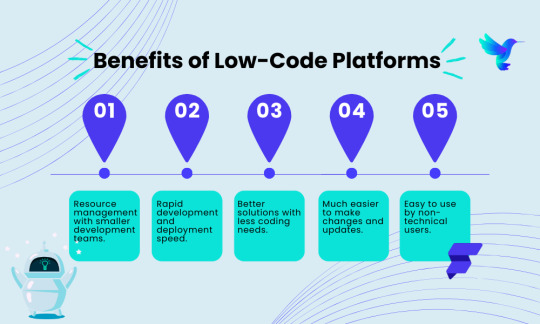
Rapid development and deployment speed.
Resource management with smaller development teams.
Better solutions with less coding needs
Easy to use by non-technical users, making it easier for them to contribute to the app development process.
Much easier to make changes and updates.
Thus with the ease and accessibility to even non-technical users, Low Code development is helping startups create professional applications on a budget. Some of the popular low-code platforms are Appian, Creatio, Outsystems, FlutterFlow, etc.
FlutterFlow gets a lead over others as it is taking low code development to new heights. Let’s now explore what makes FlutterFlow a perfect platform for your startup.
What is FlutterFlow?
FlutterFlow is built on Google’s Flutter framework, designed for developing cross-platform applications for Android, iOS, and the web. It offers a visual design interface, allowing users to plan app layouts effortlessly through simple drag-and-drop capability. FlutterFlow helps real-time collaboration, making it best for teams working together on a development project.
With an easy-to-use interface, no technical skills, and a strong framework to back it, FlutterFlow has been gaining popularity since it was conceived. Whether you are a startup or a small-scale business, if you want to create a mobile application that resonates with your audience, then, choose the FlutterFlow platform and let things flow.
Why FlutterFlow Is Perfect for Startups?
FlutterFlow is taking low code development to new heights by offering a visual development environment where users can build the solutions they want without compromising on app feature quality.
FlutterFlow basically incorporates and promotes best practices for software development. The platform streamlines complex IDE tasks into an intuitive UI, making developer interactions easier. To use the platform one needs basic training, thus even non-developers get into the basics of core app development concepts.
FlutterFlow entered the market with a vision to go from low code development to visual development. Here’s how the team is planning to achieve their goals:
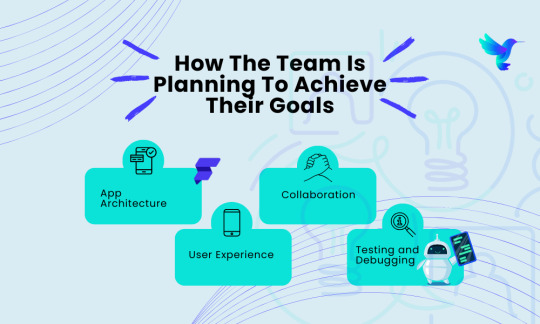
App Architecture: The codes generated using FlutterFlow meet the standards set by Flutter and Dart. They abide by the standard app market, thus helping users with a credible app development solution.
Testing and Debugging: The developers can simply test and debug the applications by running, testing, and resolving issues. This allows startups to enter the market with a flawless and highly rewarding application.
Collaboration: With modular development, smart version controls, and comprehensive access management, users can collaborate easily for better results.
User Experience: With an easy-to-explore interface, edit on clicks, ensure consistency, incorporate AI where possible, and users can switch between code and GUI.
FlutterFlow offers startups an environment where they can cross-operate, collaborate, and discuss their problems. The platform is conceived to make development easier, more convenient, and accessible for non-tech people also, who can easily make their contribution to the web now!
Some of the other advantages of the platform are:
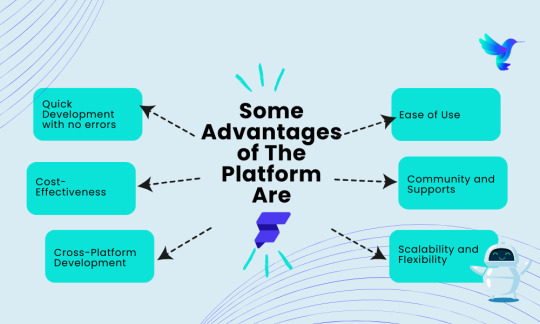
1. Quick Development With No Errors
The cheat code to making the best of your business is, to enter the market ASAP.
One of the most significant benefits of FlutterFlow is the speed at which the projects may develop. The platform’s visual interface and pre-built elements allow for speedy prototyping and development. Startups can fast-build minimum viable products (MVPs) to check thoughts in the marketplace without making a heavy investment in development sources.
Thus, you can create a product faster, take it to the market, and get feedback easily. We understand not every product works well on the first go, but with FlutterFlow you get the ease of making iterations and offering your audience a solution they’d appreciate.
2. Cost-Effectiveness
Most startups run on budget constraints. FlutterFlow helps reduce investing in large teams of seasoned developers. The platform’s drag-and-drop capability and pre-built templates lessen the quantity of custom code required, which translates to lower support and maintenance fees. A developer with lesser experience and understanding of the development languages can also, easily create an app here making it easier for you to invest your funds in other business verticals too.
3. Cross-Platform Development
FlutterFlow’s foundation lies at the Flutter framework which guarantees that applications are cross-platform by default. Thus by picking FlutterFlow startups can create and deploy applications to iOS, Android, and net platforms simultaneously. This cross-platform functionality is crucial for startups looking to maximize their target audience and digital presence without incurring the expenses and complexities of keeping separate codebases for specific platforms.
4. Ease Of Use
FlutterFlow is designed to be user-friendly, making it accessible to both skilled app developers and those with limited coding exposure. This democratization of app development means that non-technical founders and team members can contribute to the development procedure. FlutterFlow also gives tremendous documentation and tutorials, further decreasing the barrier to entry.
Because it is easy to use, the startup founders can make changes to the product as they want.
5. Scalability And Flexibility
Despite being a low-code platform, FlutterFlow gives massive flexibility. Users can add custom code to increase the functionality of their programs, making sure that they are now not confined with the aid of the platform’s built-in features. FlutterFlow additionally integrates seamlessly with backend services like Firebase and Supabase, bearing in mind robust and scalable backend solutions.
6. Community And Support
Being part of the Flutter ecosystem, FlutterFlow advantages from an active and supportive community. This network affords a wealth of assets, tutorials, and discussions that could assist startups conquer challenges and make the most of the platform. Additionally, FlutterFlow is continually evolving, with new capabilities and improvements being brought often based on user comments.
New users can always connect with the community for any assistance and customization thus creating a growth-oriented and learning ecosystem.
These are some of the most popular reasons why FlutterFlow is one of the most prominent low-code platforms for startups. So, if you are aiming to start your entrepreneurial journey and aren’t sure how to start without investing much in development, FlutterFlow is your trusted development partner.
Addressing Common Concerns of Using FlutterFlow
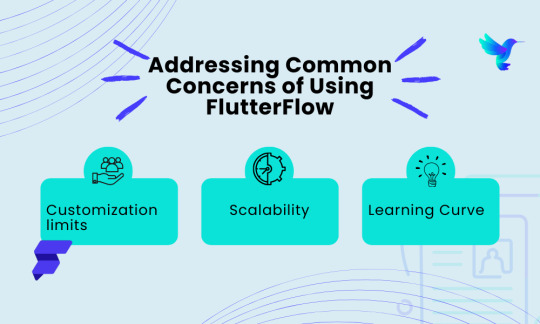
FlutterFlow may offer a great advantage for startups and businesses, but it does come with some limitations. Let’s explore the common concerns when working on the platform.
Customization Limits
The most common and often-faced concern with low-code platforms is the potential difficulty of customization. However, FlutterFlow mitigates this with the aid of custom code integration. This ensures that whilst you can enjoy the speed and efficiency of low-code development, you still have the flexibility to put into effect custom functions as wanted.
Scalability
Another concern is scalability. FlutterFlow is designed to handle significant user load and great data volumes through its integration with a powerful backend. Startups can hopefully scale their packages as their customer base expands, knowing that the platform is designed and developed to meet their business needs.
Startups with a limited user base can use the capabilities of FlutterFlow for future preparedness.
Learning Curve
While FlutterFlow is user-friendly, there can still be a strong learning curve, specifically for those new to app development. However, the considerable assets available, together with documentation, tutorials, and network help, assist mitigate this challenge.
Startups can always seek assistance from other development agencies experienced in FlutterFlow to boost learning and make sure first-class practices are followed. With little time and dedication, one can excel in their skills and implement them to build innovative products for the future.
Conclusion
FlutterFlow represents a tremendous advancement in the realm of low-code development systems, particularly for startups. Its combination of speed, value-effectiveness, ease of use, and flexibility makes it a super choice for early-stage businesses seeking to deliver their thoughts to the marketplace. By leveraging FlutterFlow, startups can reduce development time and fees, build cross-platform applications, and remain agile in a competitive landscape.
For startups and small-scale organizations trying to maximize their assets and boost their development process, FlutterFlow offers a compelling solution that bridges the gap between rapid prototyping and strong, scalable app development. As the platform continues to evolve and improve, it’s far poised to end up a good extra effective device for startups aiming to innovate and be triumphant in the virtual age.
#FlutterFlow#Custom App Development#FlutterFlow Startup businesses#Challenges for startups businesses#Low Code Development#graphical user interfaces#Benefits Of Low-Code Platforms#Google’s Flutter framework#cross-platform applications#Hire Flutter Developers#software development#advantage for startups and businesses
0 notes
Text
Technology Bias - Fuchs' 6 Dimensions of Critical Theory
After reading Rethinking Cyberfeminisms by J. Daniels, Automating Inequality (Introduction) by V. Eubanks, and watching Nicole Brown: Race and Technology, these are some of the questions I've come up with using Christian Fuchs' Six Dimensions of Critical Theory frameworks:
1: In Automating Inequality, Eubanks argued that technology can put many underrepresented groups/communities at a disadvantage. How are biases presented within these automated systems, and what can we do to prevent biases?
Some bias automated systems presented today that causes harm to marginalized communities can include but are not limited to, welfare programs, criminal justice, and hiring procedurals. These systems show signs of biases and inequality through algorithms and automated decision-making code that tends to target low-income individuals or people of color. To be more specific, welfare programs often deny or push back grants/benefits to those who needs them the most simply because of a system glitch. On the other hand, automated decision-making in hiring algorithms may rule out candidates from underserved communities, resulting in an economic opportunities limitation. In order to prevent or minimize these biases from continuing, several steps can be taken to increase system fairnesses. Firstly, governments and companies should increase public transparency and accountability by disclosing how their automated algorithms function as well as being accountable for their bias actions or results. Secondly, governments and businesses should increase human intervention during decision making instead of depending solely on automated decision-makers. Thirdly, government and companies should include diverse perspectives from different backgrounds when developing automated systems to reduce bias.
Eubanks, V. (n.d.). Automating Inequality. uCoz. https://tetrazolelover.at.ua/virginia_eubanks-automating_inequality-how_high-te.pdf
2: In Rethinking Cyberfeminisms, Daniels questions the idea that the internet is a safe space for empowering women. How does this belief conceal the ongoing gender disproportionate in the digital world?
Digital media platforms are often advertised as a safe space for all individuals to express their thoughts and even gender identity. However, even in today world, one of the biggest concerns that continue to occur is online harassment and cyber bullying. This issue often target women, women of color, and even those in the LGBTQ+ community. One of the reasons behind this issue ties back to gender inequality in the tech industry today. Most tech companies are dominated by men regardless of advocation for women in techs. Due to the lack of gender diversity in technological development, most algorithms and AI development tools are often designed in disregard to women's needs. As a result, we often see AI systems such as voice assistant (Siri) defaulting to submissive female voices, or facial recognition function performing poorly on people of color.
Daniels, J. (2009). Rethinking Cyberfeminism(s): Race, Gender, and Embodiment. WSQ: Women's Studies Quarterly 37(1), 101-124. https://dx.doi.org/10.1353/wsq.0.0158.
3. In Race and Technology introduced by Nicole Brown, the assistant professor discussed racism in the tech world as well as the political economy. How do money-driven part of business causes racial and gender inequality to persist?
It is uncommon to witness deceptive business practices in today's world regardless of how big a company may be or the many regulations that has been passed. This tie back to the lack of gender diversity in tech companies, which results in poor technological development. For example, the majority of tech executives are made up of white males, therefore, judgements and perspectives of marginalized groups are often neglected. As a result, bias in products such as surveillance cameras sold to law enforcement agencies has a higher percentage of misidentification between Black and Brown people which leads to wrongful arrest and over-policing. Overall, gender and racial inequality continue to persist today as greed often overtake ethics, causing businessmen to commit wrongful acts although they didn't mean any ill intention.
Brown, N. (n.d.). Race and Technology. YouTube. https://www.youtube.com/watch?v=d8uiAjigKy8
4. What are some ways people can practice to fight for equality, inclusivity, and a fairer system within the digital world?
To fight for equality and inclusivity is a work of a nation, not just an individual alone. This process requires a great amount of policy reforms as well as advocacy and activisms of collective groups. In order to minimize bias in technology, we can demand changes by speaking the truth and exposing unfairness in technology products. Furthermore, companies should place a higher priority for policy reforms and be held accountable for any bias decision-making. Additionally, to ensure that the future of technology is just and fair, it's crucial that we promote and encourage women and people of color to pursue careers in tech. Finally, we as users of digital products should take actions by educating ourselves on the important of utilizing technologies responsibly and how to recognize biases in the digital space.
4 notes
·
View notes
Text

I like a lot of battlemechs. Some of them look really cool, some of them play like absolute fiends, some of them are absolute piece of shit graft boxes. The Hammer isn't really ant of those, I like it because of its name.

Designed by Gibson Federated Battlemechs in Free Worlds League space and first rolling off production lines in 3053, the HMR-3M Hammer was intended to serve as a direct competitor to the Federated Commonwealth's popular Valkyrie battlemech in the light fire support role. It packs the same throw-weight in missiles, though it splits it into a pair of LRM-5s equipped with Artemis IV Fire Control and fed by a 2 ton ammo bin instead of a single LRM-10, drops the jump jets (though maintains a ground movement profile of 5/8), and carries slightly less armor than contemporary Valkyrie designs like the VLK-QD. It uses this saved weight for a fairly beefy set of sidearms- three medium lasers arranged in a vertical stack up the center torso and into the head. Interestingly, the arms of the design are free of any weapons, implying it has some want to be in melee which the missile racks really do not want it doing. As far as base models go, it's not super inspirint- as a Valkyrie competitor it lacks the mobility to quickly move to firing positions and as a fire support platform it basically serves as a budget Trebuchet, a mech that already sits firmly in Discount Dan's bin of mostly competent missile boats. It's biggest boon is likely its double ammo bins and low BV cost, which easily allows you to add weird LRM ammo like smoke and thunder rounds to a force without sacrificing an archer or something, and even then you waste the Artemis, tonnage which I think is kinda wasted on LRM-5s anyway.



Now, onto the thing that drew me to the Hammer, the variants. You see, each variant of the Hammer has a fun little nickname instead of just a variant code. That's character most mechs don't get outside customs and I think it's kinda cute. Anyway, the HMR-3S 'Slammer' is our first variant and by far the worst. This one pulls two of the medium lasers on favor of *another* 2 tons of LRM ammunition. This allows the Slammer to keep up its fearsome 10 damage barrage for 48 turns, long enough that someone else might have the sense to wander over and kill it dead.
Next, we've got probably the funniest variant, the HMR-3C Claw-Hammer. This is the compulsory 'oops all medium lasers' version of the design, pulling an LRM rack and its attendant ton of ammunition in favor of four more medium lasers. The heat sinks have been upgraded to double strength freezers to cope with the strain of being roughly 40% of a Nova, and to its credit it can more or less handle the heat of its guns.
Finally, we have the HMR-3P Pein-Hammer. Unlike the previous variants which had some long range firepower (even if it was only token like the Claw-Hammer), the Pein-Hammer is 100% a forward unit. It carries a pair each of ER medium lasers, small pulse lasers, and Streak SRM-4 launchers, along with a TAG laser designator for guided munitions and enough double heat sinks to more or less carry the load of its guns. This Hammer has a sort of annoying, weird anti-synergy with the rest of its ilk- despite being obviously a forward observing unit that LRM boats could benefit from, the TAG system it carries is wasted when combined with the Arty-IV every other model has. It does, however, pair fairly well with contemporary ANV-8M Anvil, spotting for the heavier mech's Arrow IV artillery piece.


I decided to get in on the action and make a pair of my own variants. The HMR-3ASC 'Sledge-Hammer' is an extremely low cost iteration on the 3M- rip off the expensive guidance systems of the LRM racks, along with a laser and a heat sink, and just add more missile tubes. 4 LRM-5s means that with Kerensky's blessing, you can deliver a knockdown at long range, while the lack of inbuilt guidance means special munitions are less feelbad.
The HMR-3AT Trench-Hammer is intended specifically for hunting battle armor. 4 jump jets keep it ahead of most of its prey. While the double SRM-6 rack can be loaded with Inferno munitions to make Toads die a firy death, or just regular missiles to soften them up before they get whacked by your force's bigger guns.

20 notes
·
View notes
Text
Top Trends in Software Development for 2025
The software development industry is evolving at an unprecedented pace, driven by advancements in technology and the increasing demands of businesses and consumers alike. As we step into 2025, staying ahead of the curve is essential for businesses aiming to remain competitive. Here, we explore the top trends shaping the software development landscape and how they impact businesses. For organizations seeking cutting-edge solutions, partnering with the Best Software Development Company in Vadodara, Gujarat, or India can make all the difference.
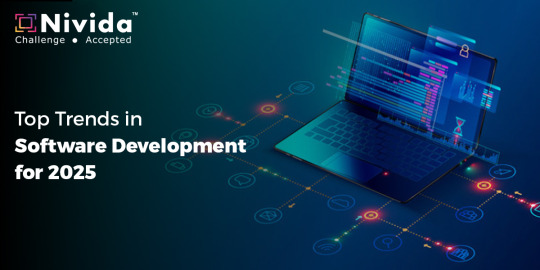
1. Artificial Intelligence and Machine Learning Integration:
Artificial Intelligence (AI) and Machine Learning (ML) are no longer optional but integral to modern software development. From predictive analytics to personalized user experiences, AI and ML are driving innovation across industries. In 2025, expect AI-powered tools to streamline development processes, improve testing, and enhance decision-making.
Businesses in Gujarat and beyond are leveraging AI to gain a competitive edge. Collaborating with the Best Software Development Company in Gujarat ensures access to AI-driven solutions tailored to specific industry needs.
2. Low-Code and No-Code Development Platforms:
The demand for faster development cycles has led to the rise of low-code and no-code platforms. These platforms empower non-technical users to create applications through intuitive drag-and-drop interfaces, significantly reducing development time and cost.
For startups and SMEs in Vadodara, partnering with the Best Software Development Company in Vadodara ensures access to these platforms, enabling rapid deployment of business applications without compromising quality.
3. Cloud-Native Development:
Cloud-native technologies, including Kubernetes and microservices, are becoming the backbone of modern applications. By 2025, cloud-native development will dominate, offering scalability, resilience, and faster time-to-market.
The Best Software Development Company in India can help businesses transition to cloud-native architectures, ensuring their applications are future-ready and capable of handling evolving market demands.
4. Edge Computing:
As IoT devices proliferate, edge computing is emerging as a critical trend. Processing data closer to its source reduces latency and enhances real-time decision-making. This trend is particularly significant for industries like healthcare, manufacturing, and retail.
Organizations seeking to leverage edge computing can benefit from the expertise of the Best Software Development Company in Gujarat, which specializes in creating applications optimized for edge environments.
5. Cybersecurity by Design:
With the increasing sophistication of cyber threats, integrating security into the development process has become non-negotiable. Cybersecurity by design ensures that applications are secure from the ground up, reducing vulnerabilities and protecting sensitive data.
The Best Software Development Company in Vadodara prioritizes cybersecurity, providing businesses with robust, secure software solutions that inspire trust among users.
6. Blockchain Beyond Cryptocurrencies:
Blockchain technology is expanding beyond cryptocurrencies into areas like supply chain management, identity verification, and smart contracts. In 2025, blockchain will play a pivotal role in creating transparent, tamper-proof systems.
Partnering with the Best Software Development Company in India enables businesses to harness blockchain technology for innovative applications that drive efficiency and trust.
7. Progressive Web Apps (PWAs):
Progressive Web Apps (PWAs) combine the best features of web and mobile applications, offering seamless experiences across devices. PWAs are cost-effective and provide offline capabilities, making them ideal for businesses targeting diverse audiences.
The Best Software Development Company in Gujarat can develop PWAs tailored to your business needs, ensuring enhanced user engagement and accessibility.
8. Internet of Things (IoT) Expansion:
IoT continues to transform industries by connecting devices and enabling smarter decision-making. From smart homes to industrial IoT, the possibilities are endless. In 2025, IoT solutions will become more sophisticated, integrating AI and edge computing for enhanced functionality.
For businesses in Vadodara and beyond, collaborating with the Best Software Development Company in Vadodara ensures access to innovative IoT solutions that drive growth and efficiency.
9. DevSecOps:
DevSecOps integrates security into the DevOps pipeline, ensuring that security is a shared responsibility throughout the development lifecycle. This approach reduces vulnerabilities and ensures compliance with industry standards.
The Best Software Development Company in India can help implement DevSecOps practices, ensuring that your applications are secure, scalable, and compliant.
10. Sustainability in Software Development:
Sustainability is becoming a priority in software development. Green coding practices, energy-efficient algorithms, and sustainable cloud solutions are gaining traction. By adopting these practices, businesses can reduce their carbon footprint and appeal to environmentally conscious consumers.
Working with the Best Software Development Company in Gujarat ensures access to sustainable software solutions that align with global trends.
11. 5G-Driven Applications:
The rollout of 5G networks is unlocking new possibilities for software development. Ultra-fast connectivity and low latency are enabling applications like augmented reality (AR), virtual reality (VR), and autonomous vehicles.
The Best Software Development Company in Vadodara is at the forefront of leveraging 5G technology to create innovative applications that redefine user experiences.
12. Hyperautomation:
Hyperautomation combines AI, ML, and robotic process automation (RPA) to automate complex business processes. By 2025, hyperautomation will become a key driver of efficiency and cost savings across industries.
Partnering with the Best Software Development Company in India ensures access to hyperautomation solutions that streamline operations and boost productivity.
13. Augmented Reality (AR) and Virtual Reality (VR):
AR and VR technologies are transforming industries like gaming, education, and healthcare. In 2025, these technologies will become more accessible, offering immersive experiences that enhance learning, entertainment, and training.
The Best Software Development Company in Gujarat can help businesses integrate AR and VR into their applications, creating unique and engaging user experiences.
Conclusion:
The software development industry is poised for significant transformation in 2025, driven by trends like AI, cloud-native development, edge computing, and hyperautomation. Staying ahead of these trends requires expertise, innovation, and a commitment to excellence.
For businesses in Vadodara, Gujarat, or anywhere in India, partnering with the Best Software Development Company in Vadodara, Gujarat, or India ensures access to cutting-edge solutions that drive growth and success. By embracing these trends, businesses can unlock new opportunities and remain competitive in an ever-evolving digital landscape.
#Best Software Development Company in Vadodara#Best Software Development Company in Gujarat#Best Software Development Company in India#nividasoftware
5 notes
·
View notes
Text
ProHoster.info: The Ultimate Solution for Reliable and Affordable Web Hosting
In todays competitive digital landscape, having a robust and reliable hosting service is critical for success. ProHoster.info has become a go-to platform for individuals and businesses seeking secure, efficient, and affordable hosting solutions. Let’s dive deep into why ProHoster.info is the right choice for you.

Comprehensive Hosting Solutions at ProHoster.info
ProHoster offers a wide range of hosting plans to cater to various needs:
Shared Hosting: Perfect for small websites, shared hosting allows multiple sites to share resources on a single server. This makes it highly affordable for beginners without compromising on performance. Ideal for personal blogs or startup sites.
VPS Hosting: ProHoster’s Virtual Private Servers provide users with dedicated resources and greater control. It’s a step up for growing websites needing better performance, ensuring faster load times and reliability.
Dedicated Servers: For large businesses or resource-intensive applications, dedicated servers offer unmatched power and exclusivity. You get full control, enhanced security, and scalability for enterprise projects.
Domain Registration and VPN Services: ProHoster also simplifies your online journey with domain registration and VPNs, ensuring your site and browsing activities remain secure and private.
Key Features That Set ProHoster Apart
DDoS Protection: Cyberattacks can devastate websites. ProHoster’s advanced DDoS protection safeguards your site from malicious traffic, ensuring your website stays online and secure 24/7.
Free SSL Certificates: Security is paramount. ProHoster provides free SSL certificates with every plan, helping secure data transfers and boosting your website's SEO rankings. A secure site builds trust among users.
24/7 Customer Support: The technical support team at ProHoster is available round the clock, providing quick and effective solutions to any issues. From minor queries to critical issues, you can rely on their professional assistance.
High-Speed Servers: Loading speed directly impacts user experience and search rankings. ProHoster’s high-speed servers ensure fast load times, reducing bounce rates and improving site engagement.
Advanced Control Panels: Managing a hosting account can seem daunting, but ProHoster simplifies it with intuitive control panels. Users can manage domains, files, and settings with ease, making it beginner-friendly yet powerful for experts.
Why ProHoster.info is the Right Choice
Cost-Effective Plans: ProHoster is designed for all budgets, providing affordable hosting without sacrificing quality. Their pricing plans are straightforward, with no hidden fees, making them perfect for small businesses or personal projects.
Global Data Centers: Hosting servers strategically placed across the globe ensure low latency and better connection speeds for your audience, regardless of their location. This feature is particularly beneficial for businesses with a global reach.
Eco-Friendly Hosting: Sustainability matters, and ProHoster is committed to eco-friendly practices. By utilizing energy-efficient technologies, they aim to reduce their carbon footprint without affecting performance.
Scalability: As your business grows, so do your hosting needs. ProHoster offers seamless scalability, allowing you to upgrade plans or resources with minimal downtime and no data loss.
Benefits of Choosing ProHoster.info
Seamless Website Builder: Building a professional website is easy, even for beginners, thanks to ProHoster’s drag-and-drop website builder. You can create a visually appealing site without coding knowledge.
99.9% Uptime Guarantee: A website that’s always online is essential for credibility. ProHoster ensures maximum uptime, so your visitors can access your site whenever they want.
Comprehensive Backup Solutions: Data loss can be devastating, but with ProHoster’s automated and secure backup solutions, your data remains safe and easily recoverable.
Final Thoughts
Choosing the right hosting provider is one of the most important decisions for your online success. ProHoster.info not only offers cutting-edge technology and robust features but also ensures affordability, reliability, and excellent customer support.
Whether you’re a budding entrepreneur, a seasoned developer, or a blogger, ProHoster has tailored solutions to help you thrive in the online world. Explore their plans today and take your website to the next level with ProHoster.info.
2 notes
·
View notes
Text
Aible And Google Cloud: Gen AI Models Sets Business Security
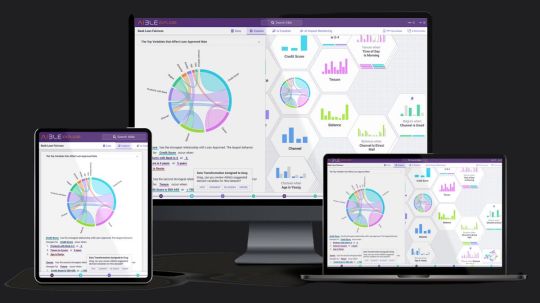
Enterprise controls and generative AI for business users in real time.
Aible
With solutions for customer acquisition, churn avoidance, demand prediction, preventive maintenance, and more, Aible is a pioneer in producing business impact from AI in less than 30 days. Teams can use AI to extract company value from raw enterprise data. Previously using BigQuery’s serverless architecture to save analytics costs, Aible is now working with Google Cloud to provide users the confidence and security to create, train, and implement generative AI models on their own data.
The following important factors have surfaced as market awareness of generative AI’s potential grows:
Enabling enterprise-grade control
Businesses want to utilize their corporate data to allow new AI experiences, but they also want to make sure they have control over their data to prevent unintentional usage of it to train AI models.
Reducing and preventing hallucinations
The possibility that models may produce illogical or non-factual information is another particular danger associated with general artificial intelligence.
Empowering business users
Enabling and empowering business people to utilize gen AI models with the least amount of hassle is one of the most beneficial use cases, even if gen AI supports many enterprise use cases.
Scaling use cases for gen AI
Businesses need a method for gathering and implementing their most promising use cases at scale, as well as for establishing standardized best practices and controls.
Regarding data privacy, policy, and regulatory compliance, the majority of enterprises have a low risk tolerance. However, given its potential to drive change, they do not see postponing the deployment of Gen AI as a feasible solution to market and competitive challenges. As a consequence, Aible sought an AI strategy that would protect client data while enabling a broad range of corporate users to swiftly adapt to a fast changing environment.
In order to provide clients complete control over how their data is used and accessed while creating, training, or optimizing AI models, Aible chose to utilize Vertex AI, Google Cloud’s AI platform.
Enabling enterprise-grade controls
Because of Google Cloud’s design methodology, users don’t need to take any more steps to ensure that their data is safe from day one. Google Cloud tenant projects immediately benefit from security and privacy thanks to Google AI products and services. For example, protected customer data in Cloud Storage may be accessed and used by Vertex AI Agent Builder, Enterprise Search, and Conversation AI. Customer-managed encryption keys (CMEK) can be used to further safeguard this data.
With Aible‘s Infrastructure as Code methodology, you can quickly incorporate all of Google Cloud’s advantages into your own applications. Whether you choose open models like LLama or Gemma, third-party models like Anthropic and Cohere, or Google gen AI models like Gemini, the whole experience is fully protected in the Vertex AI Model Garden.
In order to create a system that may activate third-party gen AI models without disclosing private data outside of Google Cloud, Aible additionally collaborated with its client advisory council, which consists of Fortune 100 organizations. Aible merely transmits high-level statistics on clusters which may be hidden if necessary instead of raw data to an external model. For instance, rather of transmitting raw sales data, it may communicate counts and averages depending on product or area.
This makes use of k-anonymity, a privacy approach that protects data privacy by never disclosing information about groups of people smaller than k. You may alter the default value of k; the more private the information transmission, the higher the k value. Aible makes the data transmission even more secure by changing the names of variables like “Country” to “Variable A” and values like “Italy” to “Value X” when masking is used.
Mitigating hallucination risk
It’s crucial to use grounding, retrieval augmented generation (RAG), and other strategies to lessen and lower the likelihood of hallucinations while employing gen AI. Aible, a partner of Built with Google Cloud AI, offers automated analysis to support human-in-the-loop review procedures, giving human specialists the right tools that can outperform manual labor.
Using its auto-generated Information Model (IM), an explainable AI that verifies facts based on the context contained in your structured corporate data at scale and double checks gen AI replies to avoid making incorrect conclusions, is one of the main ways Aible helps eliminate hallucinations.
Hallucinations are addressed in two ways by Aible’s Information Model:
It has been shown that the IM helps lessen hallucinations by grounding gen AI models on a relevant subset of data.
To verify each fact, Aible parses through the outputs of Gen AI and compares them to millions of responses that the Information Model already knows.
This is comparable to Google Cloud’s Vertex AI grounding features, which let you link models to dependable information sources, like as your company’s papers or the Internet, to base replies in certain data sources. A fact that has been automatically verified is shown in blue with the words “If it’s blue, it’s true.” Additionally, you may examine a matching chart created only by the Information Model and verify a certain pattern or variable.
The graphic below illustrates how Aible and Google Cloud collaborate to provide an end-to-end serverless environment that prioritizes artificial intelligence. Aible can analyze datasets of any size since it leverages BigQuery to efficiently analyze and conduct serverless queries across millions of variable combinations. One Fortune 500 client of Aible and Google Cloud, for instance, was able to automatically analyze over 75 datasets, which included 150 million questions and answers with 100 million rows of data. That assessment only cost $80 in total.
Aible may also access Model Garden, which contains Gemini and other top open-source and third-party models, by using Vertex AI. This implies that Aible may use AI models that are not Google-generated while yet enjoying the advantages of extra security measures like masking and k-anonymity.
All of your feedback, reinforcement learning, and Low-Rank Adaptation (LoRA) data are safely stored in your Google Cloud project and are never accessed by Aible.
Read more on Govindhtech.com
#Aible#GenAI#GenAIModels#BusinessSecurity#AI#BigQuery#AImodels#VertexAI#News#Technews#Technology#Technologynews#Technologytrends#govindhtech
2 notes
·
View notes